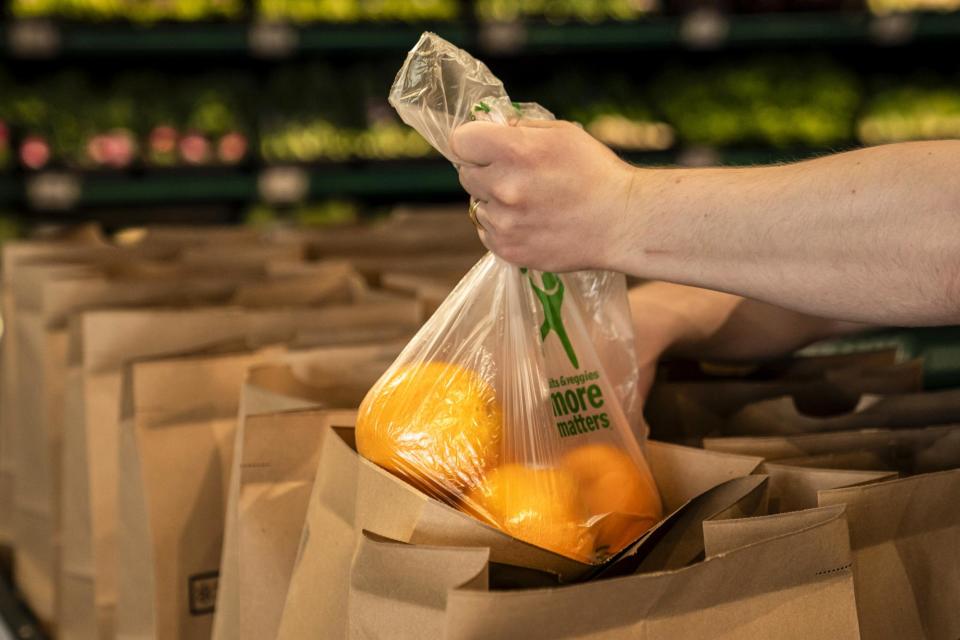Federal Reserve holds interest rates at two-decade high as it waits for inflation to cool

The Federal Reserve held interest rates at a two-decade high on Wednesday, as it awaits more signs of inflation cooling.
Officials at the US central bank expect to cut rates just once this year, according to projections released on Wednesday after their latest two-day meeting.
As recently as March, the last time these projections were released, policymakers expected the Fed to cut rates three times this year.
This time around, they opted to keep rates between 5.25% and 5.5%, where they have been for nearly a year.
While the Fed chair, Jerome Powell, described price growth as “still too high”, he welcomed official data released on Wednesday which signaled that it had eased.
“We want to gain further confidence,” Powell said during a news conference. “Certainly more good inflation readings will help with that.”
Inflation cooled slightly in the US last month, according to new consumer price index data that was also released on Wednesday, as consumers’ frustration over high prices continues to loom over November’s presidential election.
The consumer price index rose at annual pace of 3.3% in May, slipping back from the previous month’s reading of 3.4%.
Related: Do you know how the US economy is actually doing? Try our interactive quiz
Price growth has fallen dramatically since surging above 9% two years ago, to its highest level in a generation, during the economic fallout of the Covid-19 pandemic.
But with many Americans still feeling the pinch, the consumer price index has yet to fall as far as policymakers want.
While fuel prices and airline fares fell in May, and grocery price inflation was flat, rising shelter costs, including rent, helped prop up the headline rate of inflation on the year.
On a month-to-month basis, however, prices were unchanged overall – bolstering hopes that inflation is heading back towards normal levels.
The so-called “core” consumer price index, which strips out volatile food and energy prices, also rose at a weaker-than-expected monthly rate of 0.2%.
Still, the slight cooling was not enough for Fed officials on Wednesday, who emphasized that they were waiting for inflation to hit their target of 2%.
“The committee does not expect it will be appropriate to reduce the target range until it has gained greater confidence that inflation is moving sustainably toward 2%,” the Fed said in a statement on Wednesday.
The Fed must balance inflation with the labor market, which can weaken when interest rates are too high. But so far, the labor market has proven strong amid high interest rates. In May, the number of jobs added to the economy surpassed expectations, and unemployment has been under 4% for the last two years – the longest stretch in more than 50 years.
Anxiety over the state of the economy continues to linger. Nearly three in five Americans wrongly believe the US is in recession, according to a Harris poll conducted exclusively for the Guardian last month.
Unemployment is nearing 50-year lows, and Wall Street has risen sharply since the fall. But as Joe Biden seeks re-election to the White House, surveys indicate he is struggling to reassure voters that the economy has strengthened on his watch.
Wall Street opened higher on Wednesday morning as the latest inflation data raised hopes that the Fed could cut rates several times before the end of the year.
“We still need several more months of this, but the fundamentals are encouraging,” said Paul Ashworth, chief North America economist at Capital Economics, who suggested a rate cut as soon as September was “still in play”.

 Yahoo Finance
Yahoo Finance 